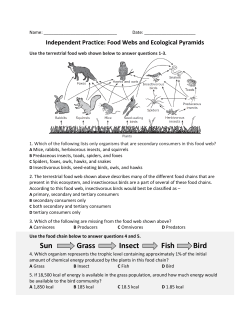
Electronic Supplementary Material (ESI) for Lab on a Chip.
Electronic Supplementary Material (ESI) for Lab on a Chip. This journal is © The Royal Society of Chemistry 2014 Supplementary information Selection of Aptamers Specific for Glycated Hemoglobin and Total Hemoglobin Using On-Chip SELEX Hsin-I Lin1, Ching-Chu Wu2, Ching-Hsuan Yang1, Ko-Wei Chang2, Gwo-Bin Lee2, 3, 4+ and Shu-Chu 1Department Shiesh1* of Medical Laboratory Science and Biotechnology, National Cheng Kung University, Tainan, Taiwan 2Department of Power Mechanical Engineering, National Tsing Hua University, Hsinchu, Taiwan 3Institute of Biomedical Engineering, National Tsing Hua University, Hsinchu, Taiwan 4Institute of NanoEngineering and Microsystems, National Tsing Hua University, Hsinchu, Taiwan 1 Supplementary Figure 1: The operating principle in the magnetic bead-based SELEX system, including incubation, partition and amplification. Note that the PCR product was denatured and then used in the next round of the SELEX process. After several consecutive rounds of the SELEX process, the aptamer with high affinity and specificity would be selected. 2 (a) HbA1c-specific aptamer candidate 1 HbA1c-specific aptamer candidate 2 anti-sense strand ΔG = -14.49 kcal/mol sense strand ΔG = -10.62 kcal/mol (b) Hb-specific aptamer candidate 1 Hb-specific aptamer candidate 2 sense strand ΔG = -4.90 kcal/mol anti-sense strand ΔG = -7.37 kcal/mol Supplementary Figure 2: The predicted secondary structures with MFOLD software for (a) HbA1c-specific and (b) Hb-specific aptamers. The Gibbs free energy (G) 3 value of HbA1c-specific sense strand is -11.47 kcal/mol, and the HbA1c-specific antisense strand -14.67 kcal/mol. The Gibbs free energy value of Hb-specific sense strand is -6.37 kcal/mol, and the Hb-specific anti-sense strand -9.67 kcal/mol. The detailed process for performing the TOPO-TA kit is as follows. 1. Set up a control TOPO® Cloning reaction by using a control PCR Product (1 μL), water (3 μL), a salt solution (1 μL) and the TOPO® vector (1 μL). They were loaded together and conducted a ligation process for 5 minutes at room temperature. After the ligation process, the circular-form DNA was added into 50 μL of competent cells and then they were placed on ice for 30 min. Later, they were placed at a temperature of 42°C for 30 sec for transformation. 2. Next, put them on ice for 3 min and 250 μL of LB was added. They were then shaken at 37°C for 1 hour for quick culture. 3. Spread 50 μL of the transformation mix onto LB plates (containing ampicillin, XGal and IPTG), and then culture at 37°C overnight. Finally, white colonies were chosen for further sequencing. 4
© Copyright 2025





















